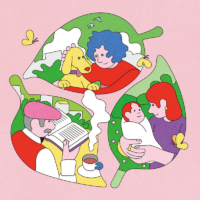As Thomas Rimer writes in his introduction to this interesting collection of papers on Japan's artistic pedagogy, an "underlying assumption behind these Japanese aesthetic assumptions is that of cognition." An important part of the aesthetic pleasure was to be derived from the use, reuse and new uses of those conventions of style and content deemed by artist and patron alike as appropriate to the particularly occasion for which a particular work was created. Technique was art.
This is an idea quite opposite to that entertained by the West, where originality is usually prized and mere technique derided. Blatant individuality rather than any individual use of conventionality has become the standard of a perceived excellence.
Though Japanese aesthetics left some room for fresh, new vision, and though Western art has had its share of "mere" technicians, in large the two approaches, East and West, stand separate. In Japan the artist was expected to master fully his technique before any such ambition as self expression was tolerated.


















With your current subscription plan you can comment on stories. However, before writing your first comment, please create a display name in the Profile section of your subscriber account page.